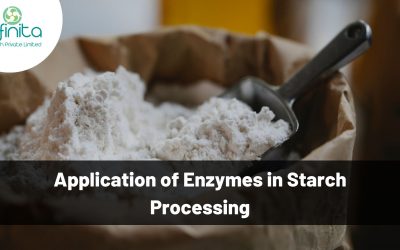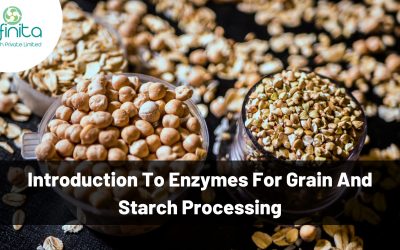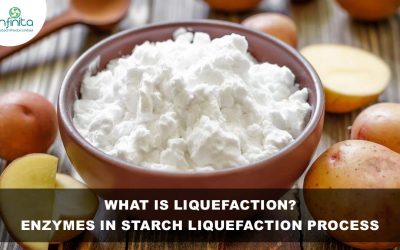
Understanding the Role of Pepsin and Its Interaction with Food
Pepsin is a crucial enzyme that plays a vital role in the digestive system. It’s responsible for breaking down proteins in food into smaller, more manageable pieces. This process helps the body to absorb essential nutrients from the food we eat. In this article, we’ll explore the anatomy of pepsin, its interaction with food, and its role in digestive health.
The Anatomy of Pepsin
Pepsin is a type of protease enzyme, which means it breaks down proteins. It’s produced in the stomach and is an essential component of gastric juice. The structure of pepsin comprises two chains of amino acids that are folded together. This structure allows pepsin to interact with proteins in food and break them down into smaller pieces.
Pepsin and the Stomach
Pepsin plays a crucial role in the digestive process. When food enters the stomach, it stimulates the production of gastric juice, which contains pepsin. The pepsin then begins to break down the proteins in the food into smaller pieces. This process helps to make the proteins easier to digest, and it also helps to neutralize the acid in the stomach.
Pepsin and Food
Pepsin interacts with the proteins in food to break them down into smaller pieces. This process is essential for the body to absorb essential nutrients from the food we eat. When food enters the stomach, pepsin begins to break down the proteins into smaller pieces, further broken down by other digestive enzymes. This process continues until the proteins are broken down into individual amino acids, which can then be absorbed by the body.
Pepsin and Digestive Disorders
Pepsin imbalances can lead to digestive disorders, such as gastroesophageal reflux disease (GERD) and peptic ulcers. GERD is a condition in which the acid in the stomach backs up into the esophagus, causing heartburn and other symptoms. Pepsin imbalances can also contribute to the formation of peptic ulcers, which are sores that form in the lining of the stomach.
Pepsin and Drug Interactions
Pepsin can interact with certain drugs, such as antacids and proton pump inhibitors. Antacids neutralize the acid in the stomach, which can reduce the effectiveness of pepsin. Proton pump inhibitors are drugs that reduce the production of acid in the stomach, and they can also have an impact on pepsin. It’s important to talk to your doctor about any potential drug interactions if you take medications for digestive disorders.
Pepsin and Nutritional Considerations
Pepsin plays a crucial role in protein digestion, and the body needs to absorb essential nutrients from the food we eat. Pepsin helps to break down the proteins in food into smaller pieces, which makes them easier to absorb. The body then uses these smaller pieces to build and repair tissues and to produce hormones and enzymes.
Pepsin and Alternative Therapies
There are alternative therapies, such as herbal remedies and probiotics, that may help to support digestive health and pepsin function. Herbal remedies, such as ginger and peppermint, have been used for centuries to help soothe digestive issues. Probiotics, which are beneficial bacteria, can also help to support digestive health by improving the balance of bacteria in the gut.
Conclusion
Pepsin is a crucial enzyme that plays a vital role in the digestive system. It’s responsible for breaking down proteins in food into smaller, more manageable pieces, which helps the body to absorb essential nutrients. Pepsin imbalances can lead to digestive disorders, such as GERD and peptic ulcers, but alternative therapies and dietary changes can help to support digestive health and pepsin function.
FAQs
What is Pepsin?
Pepsin is a type of protease enzyme that breaks down proteins in food. It’s produced in the stomach and is an essential component of gastric juice.
What is the role of Pepsin in the digestive system?
Pepsin plays a crucial role in the digestive process, breaking down proteins in food into smaller pieces to make them easier to digest and absorb.
Can Pepsin imbalances lead to digestive disorders?
Yes, pepsin imbalances can lead to digestive disorders like GERD and peptic ulcers.
How can alternative therapies help support Pepsin's function?
Herbal remedies, such as ginger and peppermint, and probiotics can help to support digestive health and pepsin function.
What is the impact of drugs on Pepsin function?
Certain drugs, such as antacids and proton pump inhibitors, can interact with pepsin and reduce its effectiveness. It’s important to talk to your doctor about any potential drug interactions
ALPHA AMYLASE FOR LIQUEFACTION
This high temperature Alpha Amylase convert Starch into Dextrin.

Reduces
Viscosity

Dextrins
Generation

Free Sugar
Generation
BETA AMYLASE
Our Beta Amylase can be used for the production of Maltose Syrup.

Maltose
Generation

De-branchng Of
Dextrins

Reduces Viscosity
GLUCO AMYLASE FOR SACCHARIFICATION
Our Gluco Amylase is useful for converting Dextrin into Glucose.

High Glucose Syrup

Pullanase Activity

Thermal And Ph Stability
Related Articles
Application of Enzymes in Starch Processing
Enzymes are biological molecules that are essential for various metabolic processes in living organisms. Various industrial processes such as food processing, pharmaceuticals, and textiles also utilize enzymes. Enzymes play a crucial role in the field of starch...
Introduction to Enzymes for Grain and Starch Processing
Enzymes play a critical role in the grain and starch processing industry. They are biological catalysts that speed up chemical reactions and allow for the production of high-quality products with increased efficiency and lower costs. In this article, we will explore...

Understanding the Role of Pepsin and Its Interaction with Food
Many industries like food, beverage, and pharmacy use sugar as a strategic sweetener and prefer liquid sugar for it. On the other hand, people use crystal sugar for domestic usage. The crystallisation process in sugar production units is highly energy-intensive. Since the production process of liquid sugar doesn’t include crystallisation, industries that need sugar as a sweetener prefer liquid sugar because they save a considerable amount of energy.
Starch is the essential raw material used in liquid sugar production. Liquid sugar, also called glucose syrup, is a condensed solution gained from starch by enzyme hydrolysis.
The enzymatic procedure to hydrolyse starch is a more effective and simple process than acid hydrolysis. The process is basically divided into two phases – liquefaction and saccharification.
Liquefaction: An Overview
The liquefaction process includes the gelatinisation of the starch and its treatment with alpha-amylase (𝛂-amylase). The 𝛂-amylase breaks down the starch into even-sized chains, resulting in maltose, dextrin, malt-pentose, and malt-triose. This process is followed by saccharification, the second stage of enzymatic hydrolysis of starch.
Effect of liquefaction time and enzyme addition on liquid sugar production
Glucose production will be greater if there is a longer hydrolysis process. The process can be prolonged with longer liquefaction, resulting in increased glucose content. With a longer liquefaction time, higher glucose content can be obtained since it helps in better fragmentation of starch into glucose. However, an excessively long liquefaction process and enzyme addition can have an adverse effect. It may happen due to a specific activity of α-amylase.
During enzyme hydrolysis, it is essential to run the liquefaction effectively with the right timing; otherwise, the desired result wouldn’t be gained. The effectiveness of the liquefaction process can be ensured by proper conditions for processing and adding the right amount of enzymes.
Types Of Enzymes Used In Starch Liquefaction Process
Different enzymes can optimise the starch liquefaction process in terms of quality, cost, and efficiency of the process, considering a range of conditions. The following are the widely used enzymes in the starch liquefaction process;
Alpha-amylases
Alpha-amylase breaks down the starch under the right circumstances, initiates the liquefaction process and converts starch into liquid sugar. It is an enzyme that initiates the degradation of starch molecules and hydrolysis of starch to break it into small chains. Nearly all living organisms widely produce this enzyme. These enzymes have applications in various food-related industries, and the liquefaction of sugar is a primary one among them. Apart from that, they are used during baking as an antistaling agent in bread.
Where To Get Enzymes For Liquefaction?
Starch liquefaction is a process utilised by numerous industries like food, beverages and pharmaceuticals; therefore, liquefaction enzymes have numerous applications in these industries. If you are operating an industrial unit and need enzymes for liquefaction but don’t know where to get them, Infinita Biotech is the solution. We are one of India’s leading biotech firms known for our assorted range of industrial enzymes and solutions. The array of solutions and products offered by us deliver numerous benefits that conventional chemicals and processes can not provide. With products and solutions provided by Infinita Biotech, industrial units can have the benefits like optimum quality, reduced production cost, minimal wastage and lower consumption of energy.
0 Comments
Submit a Comment
You must be logged in to post a comment.
ALPHA AMYLASE FOR LIQUEFACTION
This high temperature Alpha Amylase convert Starch into Dextrin.

Reduces Viscosity

Dextrins Generation

Free Sugar Generation
BETA AMYLASE
Our Beta Amylase can be used for the production of Maltose Syrup.

Maltose Generation

De-branchng Of Dextrins

Reduces Viscosity
GLUCO AMYLASE FOR SACCHARIFICATION
Our Gluco Amylase is useful for converting Dextrin into Glucose.

High Glucose Syrup

Pullanase Activity

Thermal And Ph Stability
Application of Enzymes in Starch Processing
Enzymes are biological molecules that are essential for various metabolic processes in living organisms. Various industrial processes such as food processing, pharmaceuticals, and textiles also utilize enzymes. Enzymes play a crucial role in the field of starch...
Introduction to Enzymes for Grain and Starch Processing
Enzymes play a critical role in the grain and starch processing industry. They are biological catalysts that speed up chemical reactions and allow for the production of high-quality products with increased efficiency and lower costs. In this article, we will explore...
What is Liquefaction? Enzymes in Starch Liquefaction Process
Many industries like food, beverage, and pharmacy use sugar as a strategic sweetener and prefer liquid sugar for it. On the other hand, people use crystal sugar for domestic usage. The crystallisation process in sugar production units is highly energy-intensive. Since...




0 Comments